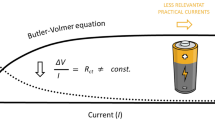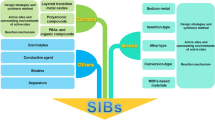Abstract
Quinone-based macrocyclic compounds have been proposed as promising electrode materials for rechargeable lithium-ion batteries (LIBs). To improve the electrochemical performance, in this paper, two heteroatom-bridged pillar[4]quinones (namely, oxa- and thia-pillar[4]quinones) are presented as active cathode materials for LIBs. The geometry structures, electronic structural properties, and electrochemical properties of these new species are calculated by Density Functional Theory (DFT) at the M06-2X/6-31G(d,p) level of theory. Two heteroatom-bridged pillar[4]quinones possess higher theoretical specific capacity (659 mA h g−1 and 582 mA h g−1 for oxa- and thia- pillar[4]quinones, respectively) than that of parental pillar[4]quinone (446 mA h g−1). The electrochemical performances of oxa- and thia-pillar[4]quinones are predicted theoretically to be superior to those of pillar[4]quinone as cathode material for LIBs. Compared with oxa-pillar[4]quinone, thia-pillar[4]quinone is predicted to be slightly more suitable as cathode electrode material. These results may provide fresh ideas and guidelines for enhancing the performance of quinones organic electrode materials for LIBs.
Graphic Abstract
Two heteroatom-bridged pillar[4]quinones, Oxapillar[4]quinone and Thiapillar[4]quinone, are proposed as the electrode active molecules. The lithium storage mechanisms and electrochemical properties are investigated by using DFT calculations. The results show that the heteroatom-bridged pillar[4]quinones are predicted theoretically to exihibit a better electrode material performance than the parent pillar[4]quinone.







Similar content being viewed by others
References
Novak P, Muller K, Santhanam S V and Hass O 1997 Electrochemically active polymers for rechargeable batteries Chem. Rev. 97 207
Arman M and Tarascon J M 2008 Building better batteries Nature 451 652
Poizot P and Dolhem F 2011 Clean energy new deal for a sustainable world: from non-CO2 generating energy sources to greener electrochemical storage devices Energy Environ. Sci. 4 2003
Liang Y, Tao Z and Chen J 2012 Organic electrode materials for rechargeable lithium batteries Adv. Energy Mater. 2 742
Nishide H and Oyaizu K 2008 Toward flexible batteries Science 319 737
Guo W, Yin Y X, Xin S, Guo Y G and Wan L J 2012 Superior radical polymer cathode material with a two-electron process redox reaction promoted by graphene Energy Environ. Sci. 5 5221
Janoschka T, Hager M D and Schubert U S 2012 Carbonyls: powerful organic materials for secondary batteries Adv. Mater. 24 6397
Li Y J, Zhan H, Kong L B, Zhan C M and Zhou Y H 2007 Electrochemical properties of PABTH as cathode materials for rechargeable lithium battery Electrochem. Commun. 9 1217
Fanous J, Wegner M, Grimminger J, Andresen A and Buchmeiser M R 2011 Structure-related electrochemistry of sulfur-poly(acrylonitrile) composite cathode materials for rechargeable lithium batteries Chem. Mater. 23 5024
Amin K, Mao L and Wei Z 2019 Recent progress in polymeric carbonyl-based electrode materials for lithium and sodium ion batteries Macromol. Rapid Commun. 40 1800565
Song Z P, Zhan H and Zhou Y H 2010 Polyimides: promising energy-storage materials Angew. Chem. Int. Ed. 49 8444
Song Z P, Xu T, Gordin M L, Jiang Y B, Bae I T, Xiao Q F, Zhan H, Liu J and Wang D H 2012 Polymer-graphene nanocomposites as ultrafast-charge and-discharge cathodes for rechargeable lithium batteries Nano. Lett. 12 2205
Nokami T, Matsuo T, Inatomi Y, Hojo N, Tsukagoshi T, Yoshizawa H, Shimizu A, Kuramoto H, Komae K, Tsuyama H and Yoshida J-i 2012 Polymer-bound pyrene-4,5,9,10-tetraone for fast-charge and -discharge lithium-ion batteries with high capacity J. Am. Chem. Soc. 134 19694
Hanyu Y and Honma I 2012 Rechargeable quasi-solid state lithium battery with organic crystalline cathode Sci. Rep. 2 453
Liang Y L, Zhang P, Yang S Q, Tao Z L and Chen J 2013 Fused heteroaromatic organic compounds for high-power electrodes of rechargeable lithium batteries Adv. Energy Mater. 3 600
Huang W, Zhu Z, Wang L, Wang S, Li H, Tao Z, Shi J, Guan L and Chen J 2013 Angew. Chem. Int. Ed. 52 9162
Chen H, Armand M, Demailly G, Dolhem F, Poizot P and Tarascon J M 2008 From biomass to a renewable LixC6O6 organic electrode for sustainable Li-ion batteries. ChemSusChem 1 348
Liu K, Zheng J, Zhong G and Yang Y 2011 Poly(2,5-dihydroxy-1,4-benzoquinonyl sulfide) (PDBS) as a cathode material for lithium ion batteries J. Mater. Chem. 21 4125
Liang Y L, Zhang P, Tao Z L and Chen J 2013 Function-oriented design of conjugated carbonyl compound electrodes for high energy lithium batteries Chem. Sci. 4 1330
Zhu Z, Hong M, Guo D, Shi J, Tao Z and Chen J 2014 All-solid-state lithium organic battery with composite polymer electrolyte and pillar[5]quinone Cathode J. Am. Chem. Soc. 136 16461
Huan L, Xie J, Chen M, Diao G W, Zhao R F and Zuo T F 2017 Theoretical investigation of pillar[4]quinone as a cathode active material for lithium-ion batteries J. Mol. Model. 23 105
Huan L, Xie J, Huang Z L, Chen M, Diao G W and Zuo T F 2017 Computational electrochemistry of pillar[5]quinone cathode material for lithium-ion batteries Comp. Mater. Sci. 137 233
Yokoji T, Matsubara H and Satoh M 2014 Rechargeable organic lithium-ion batteries using electron-deficient benzoquinones as positive electrode materials with high discharge voltages J. Mater. Chem. A 2 19347
Assary R S, Brushett F R and Curtiss L A 2014 Reduction potential predictions of some aromatic nitrogen-containing molecules RSC Adv. 4 57442
Lao K and Yu C 2011 A computational study of unique properties of pillar[n]quinones: self-Assembly to tubular structures and potential applications as electron acceptors and anion recognizers J. Comput. Chem. 32 2716
Kumagai H, Hasegawa M, Miyanan S, Sugawa Y, Sato Y, Hori T, Ueda T, Kamiyama H and Miyano S 1997 Facile synthesis of p-tert-butylthiacalix[4]arene by the reaction of p-tert-butylphenol with elemental sulfur in the presence of a base. Tetrahedron Lett. 38 3971
König B and Fonseca M H 2000 Heteroatom-bridged calixarenes Eur. J. Inorg. Chem. 11 2303
Katz J L, Feldman M B and Conry R R 2005 Synthesis of functionalized oxacalix[4]arenes Org. Lett. 7 91
Wang M X 2012 Nitrogen and oxygen bridged calixaromatics: synthesis, structure, functionalization, and molecular recognition Acc. Chem. Res. 45 182
Thomas J, Rossom W V, Hecke K V, Meervelt L V, Smet M, Maes W and Dehaen W 2012 Selenaxalix[3]triazines: synthesis and host-guest chemistry Chem. Commun. 48 43
Thomas J, Dobrzańska L, Van H K, Sonawane M P, Robeyns K, Van M L, Woźniak K, Smet M, Meas W and Dehaen W 2012 Homoselenacalix[4]arenes: synthetic exploration and metallosupramolecular chemistry Org. Biomol. Chem. 10 6526
Zuo C, Wiest O and Wu Y 2011 Structures and conformations of heteroatom-bridged calixarenes J. Phys. Org. Chem. 24 1157
Xie J, Shen C, Shi H, Luo S, He M and Chen M 2020 Theoretical prediction of structures and inclusion properties of heteroatom-bridged pillar[n]arenes Struct. Chem. 31 329
Shivakumar K I and Sanjayan G J 2013 An easy and multigram-scale synthesis of pillar[5]quinone by the hypervalent iodine oxidation of 1,4-dimethoxypillar[5]arene Synthesis 45 896
Bruce P G, Freunberger S A, Hardwick L J and Tarascon J-M 2012 Li-O2 and Li-S batteries with high energy storage Nature Mat. 11 19
Frisch M J, Trucks G W, Schlegel H B, Scuseria G E, Robb M A, Cheeseman J R, Scalmani G, Barone V, Mennucci B, Petersson G A, Nakatsuji H, Caricato M, Li X, Hratchian H P, Izmaylov A F, Bloino J, Zheng G, Sonnenberg J L, Hada M, Ehara M, Toyota K, Fukuda R, Hasegawa, J, Ishida M, Nakajima T, Honda Y, Kitao O, Nakai H, Vreven T, Montgomery J A Jr, Peralta J E, Ogliaro F, Bearpark M, Heyd J J, Brothers E, Kudin K N, Staroverov V N, Kobayashi R, Normand J, Raghavachari K, Rendell A, Burant J C, Iyengar S S, Tomasi J, Cossi M, Rega N, Millam J M, Klene M, Knox J E, Cross J B, Bakken V, Adamo C, Jaramillo J, Gomperts R, Stratmann R E, Yazyev O, Austin A J, Cammi R, Pomelli C, Ochterski J W, Martin R L, Morokuma K, Zakrzewski V G, Voth G A, Salvador P, Dannenberg J J, Dapprich S, Daniels A D, Farkas Ö, Foresman J B, Ortiz J V, Cioslowski J and Fox D J 2010 Gaussian 09, Revision B.01. Gaussian, Inc., Wallingford, CT
Zhao Y and Truhlar D G 2008 Density functionals with broad applicability in chemistry Chem. Res. 41 157
Zhao Y and Truhlar D G 2008 The M06 suite of density functionals for main group thermochemistry, thermochemical kinetics, noncovalent interactions, excited states, and transition elements: two new functionals and systematic testing of four M06-class functionals and 12 other functionals Theor. Chem. Acc. 120 215
Glendening E D, Reed A E, Carpenter J E and Weinhold F, NBO 3.1 Program as Implemented in Gaussian 09 Package.
Lange A W and Herbert J M 2010 Polarizable continuum reaction-field solvation models affording smooth potential energy surfaces J. Phys. Chem. Lett. 1 556
Jouyban A and Soltanpour S 2010 Prediction of dielectric constants of binary solvents at various temperatures J. Chem. Eng. Data 55 2961
Zu C X and Li H 2011 Thermodynamic analysis on energy densities of batteries Energy Environ. Sci. 4 2614
Bachman J E, Curtiss L A and Assary R S 2014 Investigation of the redox chemistry of anthraquinone derivatives using density functional theory J. Phys. Chem. A 118 8852
Dardenne N, Blase X, Hautier G, Charlier J-C and Rignanese G-M 2015 Ab initio calculations of open-cell voltage in Li-ion organic radical batteries J. Phys. Chem. C 119 23373
Marenich A V, Ho J, Coote M L, Cramer C J and Truhlar D G 2014 Computational electrochemistry: prediction of liquid-phase reduction potentials Phys. Chem. Chem. Phys. 16 15068
Humphrey W, Dalke A and Schulten K 1996 VMD: Visual Molecular Dynamics J. Mole. Graphics 14 33
Fallah-Bagher-Shaidaei H, Wannere C S, Corminboeuf C, Puchta R and Schleyer P V R 2006 Which NICS aromaticity index for planar π rings is best Org. Lett. 8 863
Lu T and Chen F W 2012 Multiwfn: A multifunctional wavefunction analyzer J. Comput. Chem. 33 58
Kim K C, Liu T, Lee S W and Jang S S 2016 First-principles density functional theory modeling of Li binding: thermodynamics and redox properties of quinone derivatives for lithium-ion batteries J. Am. Chem. Soc. 138 2374
Cheng B and Kaifer A E 2015 Cathodic voltammetric behavior of pillar[5]quinine in nonaqueous media. Symmetry effects on the electron uptake sequence J. Am. Chem. Soc. 137 9788
Acknowledgements
This work was supported by Priority Academic Program Development of Jiangsu Higher Education Institutions (PAPD); Top-notch Academic Programs Project of Jiangsu Higher Education Institutions (TAPP, PPZY2015B112); 111 Project, B12015; Graduate Research & Practice Innovation Program of Jiangsu Province (XKYCX18_052, XKYCX19_071).
Author information
Authors and Affiliations
Corresponding authors
Electronic supplementary material
Below is the link to the electronic supplementary material.
Rights and permissions
About this article
Cite this article
Xie, J., Shi, H., Shen, C. et al. Heteroatom-bridged pillar[4]quinone: evolutionary active cathode material for lithium-ion battery using density functional theory. J Chem Sci 133, 2 (2021). https://doi.org/10.1007/s12039-020-01863-5
Received:
Revised:
Accepted:
Published:
DOI: https://doi.org/10.1007/s12039-020-01863-5




